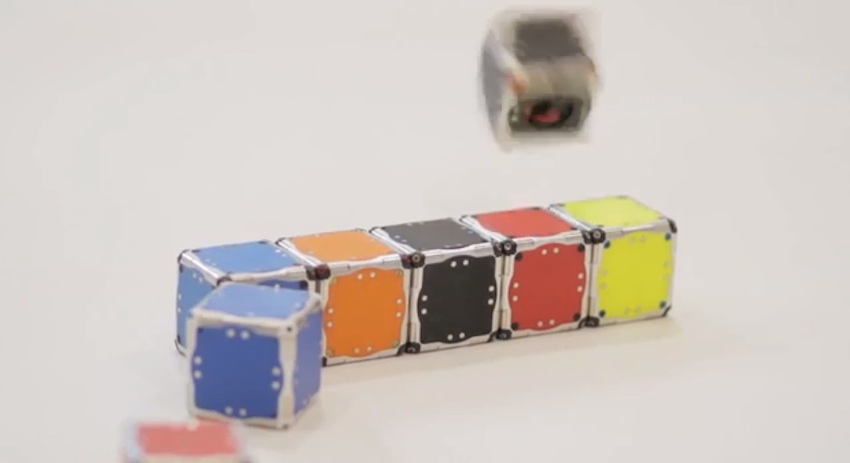These Blocks Built At MIT Can Self-Assemble
It’s been an eerie week in robot news.
Boston Dynamics, a Waltham-based company, released—quite literally—a beast of a robotic invention with animal-like features, allowing it to run at speeds of up to 16 miles-per-hour.
On top of that, researchers at MIT unveiled building blocks that can self-assemble, without the touch of human hands.
According to a report from MIT News—and an accompanying video that will make you wonder when robots will begin taking over the earth—the blocks have the ability to “propel themselves forward, jump on top of each other, and snap together to form arbitrary shapes,” without any exterior parts guiding them along.
From the report:
They’re able to climb over and around one another, leap through the air, roll across the ground, and even move while suspended upside down from metallic surfaces. Inside each [block] is a flywheel that can reach speeds of 20,000 revolutions per minute; when the flywheel is braked, it imparts its angular momentum to the cube. On each edge of an M-Block, and on every face, are cleverly arranged permanent magnets that allow any two cubes to attach to each other.
Called M-blocks, which were developed by John Romanishin, a research scientist in MIT’s Computer Science and Artificial Intelligence Laboratory, and Kyle Gilpin, a postdoc student, the science behind the modular cubes will be detailed in a report the duo plans on presenting at the IEEE/RSJ International Conference on Intelligent Robots and Systems later this year. The hope of both Gilpin and Romanishin, who first proposed the idea about the blocks more than two years ago, is that one day the self-assembling pieces will be a viable resource for things like reassembling damaged bridges or other structures.
Until then, just watching the tiny, cube-shaped robots in action will have to suffice:



